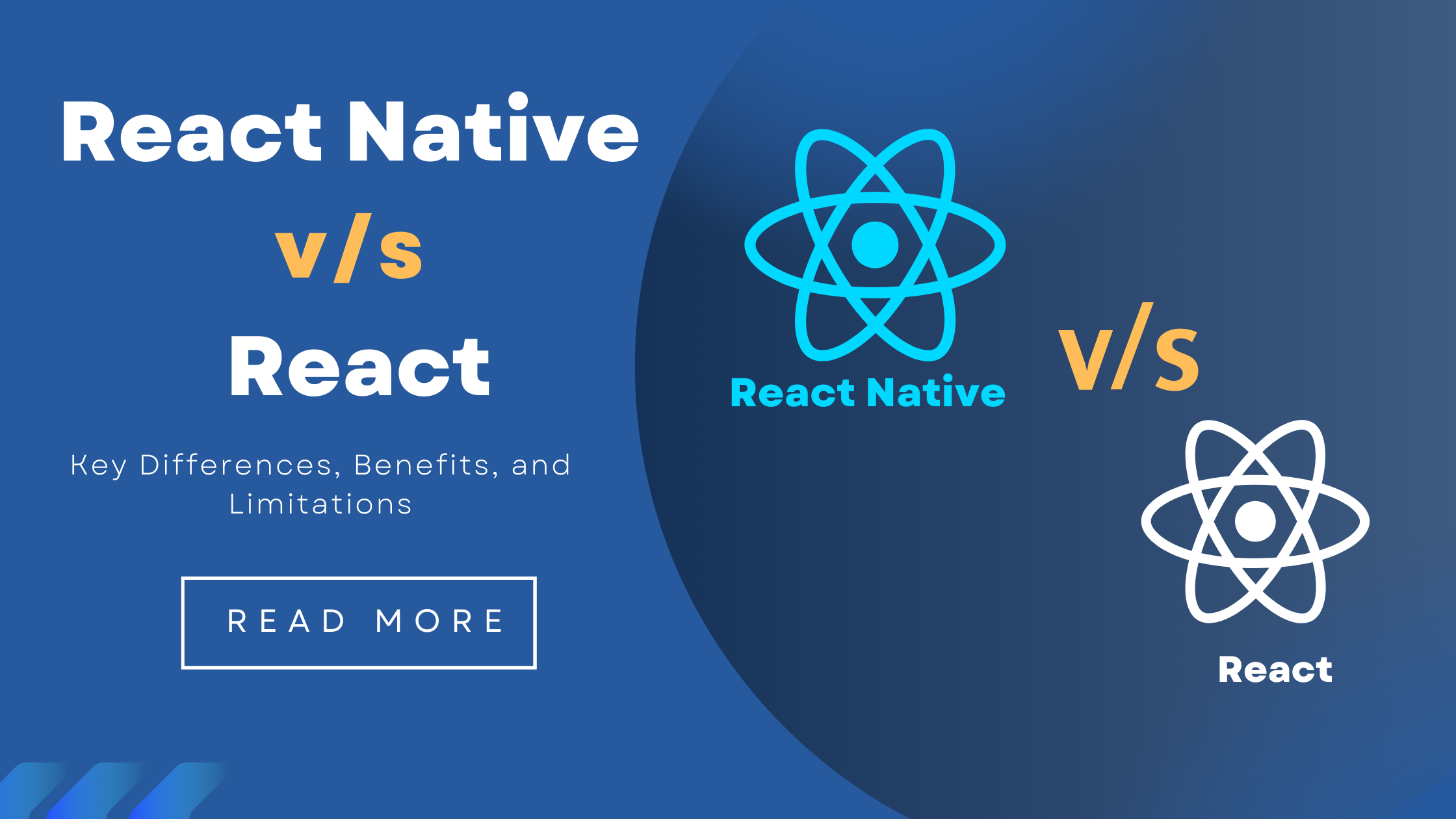React vs React Native: Key Differences, Benefits, and Limitations
 Olivia Davis
Olivia Davis
Facebook has developed react and react native platforms with different uses in app development. React Native is designed for building mobile apps for iOS and Android, following the same principles as React, which is used to develop dynamic web interfaces. React impacts over 10 million web pages, with 90% of developers choosing React Native for cross-platform mobile app development.
Main Differences Between React and React Native:
Platform:
React: It is mostly used for building web user interfaces.
React Native: Uses platform-specific APIs to render components as native user interface elements.
Rendering:
React: Renders HTML to the browser DOM.
React Native: Renders components as native UI elements using platform-specific APIs.
UI Components:
React: Uses standard web elements like <div>, <span>, <h1>, etc.
React Native: Utilizes mobile-specific components like <View>, <Text>, and <Image>.
Styling:
React: Employs CSS (or CSS-in-JS libraries) for styling.
React Native: Uses a style object similar to CSS but written in JavaScript.
Development Environment:
React: Developed using web browser tools like Chrome Developer Tools.
React Native: Requires simulators/emulators or actual devices for testing, using native development environments like Xcode and Android Studio.
Performance:
React: Relies on the browser's rendering engine.
React Native: Bridges to native APIs directly, offering better performance than hybrid apps.
Code Sharing:
React: Limited to web applications.
React Native: Allows code reuse across both iOS and Android platforms, with some platform-specific adjustments.
These key differences highlight how each technology is tailored to its specific use case, making them powerful tools in their respective domains.
React vs React Native: Key Benefits of Each Framework
Both React and React Native have distinct benefits depending on whether you're building web or mobile applications.
Benefits of React Native:
Cross-Platform Development: React Native drastically cuts down on development time and expenses by allowing developers to create a single codebase for both iOS and Android.
Native Performance: React Native leverages native APIs to render components, delivering performance that closely matches native apps and providing a smoother user experience compared to hybrid solutions.
Code Reusability: Developers can reuse most of the code between iOS and Android, saving time on maintenance and updates.
Hot Reloading: Hot Reloading enables developers to instantly view changes during development, streamlining the workflow and enhancing productivity.
Access to Native Features: React Native simplifies access to native modules such as GPS, camera, and sensors, enabling developers to build feature-rich mobile applications with ease.
If you want to leverage React Native's power for your mobile app, you should hire React Native developers who are experienced in building high-quality, cross-platform applications.
Benefits of React:
Component-Based Architecture: React's modular and reusable components make it easier to design and maintain complex UIs, leading to cleaner and more organized code.
Extensive Ecosystem: React's ecosystem is rich with libraries and tools like React Router and Redux, which streamline development and facilitate integration with other technologies.
SEO-Friendly: React's server-side rendering (SSR) capabilities make it easier to create SEO-optimized websites, improving search engine visibility.
Strong Community Support: A robust and active community makes it easier for developers to get help and solve problems by providing a wealth of resources, tutorials, and third-party tools.
Virtual DOM: React optimizes rendering using a Virtual DOM, which updates only the changed UI parts, thereby improving performance. This is a key feature of React for Optimal Performance in dynamic web applications.
React vs. React Native: Understanding the Limitations of Each Framework
Limitations of React Native
Performance: While React Native offers near-native performance, it can struggle with complex tasks and extensive animations, sometimes falling short compared to fully native applications.
Native Code Dependency: For advanced features and functionalities, developers might need to write native code, requiring proficiency in languages like Java/Kotlin for Android and Swift/Objective-C for iOS. This adds complexity to the development process.
Library and Plugin Support: Third-party libraries and plugins are more limited in availability than native development frameworks. Some libraries might not support all React Native features or platforms, which can be a constraint.
Debugging Challenges: React Native apps can be challenging due to the abstraction layer between JavaScript and the native environment. While tools like React Native Debugger are available, the experience isn’t always as smooth as debugging native applications.
Update and Compatibility Issues: Updates to React Native or its dependencies can introduce compatibility issues, requiring significant adjustments to existing codebases. This is particularly challenging for large-scale applications.
Asynchronous Nature: If not managed properly, using asynchronous functions in JavaScript can sometimes lead to performance bottlenecks or race conditions, affecting the app’s responsiveness.
Evolving Ecosystem: The React Native ecosystem is still rapidly changing, so some tools and libraries may quickly become outdated. Developers must stay updated with updates to maintain their applications effectively.
These challenges illustrate potential obstacles developers may encounter with React Native, but many can be addressed through thoughtful planning and effective management.
Limitations of React:
SEO Limitations: Although React's server-side rendering (SSR) improves SEO, it can be complex to implement and might not work seamlessly with all content types, leading to inconsistent search engine indexing.
Learning Curve: React introduces concepts like JSX, Virtual DOM, and component-based architecture that can be challenging for beginners to grasp, especially for those new to JavaScript frameworks.
Boilerplate Code: While React promotes component reusability, setting up a React project often requires a significant amount of boilerplate code and configuration, which can be daunting for newcomers.
Performance Issues: If improperly handled, frequent component updates and re-rendering in large applications can cause performance bottlenecks. Developers must be aware of optimization strategies.
Dependency Management: React projects can rely heavily on third-party libraries and tools, leading to dependency management issues and potential compatibility problems during updates.
Lack of Opinionation: React is a library, not a framework, requiring built-in solutions for routing and state management tasks. Developers frequently depend on external libraries, creating more cohesive and consistent codebases.
Tooling Complexity: The React ecosystem is rich but can also be overwhelming due to the sheer number of tools, libraries, and best practices, which can complicate the development process for teams new to the environment.
Understanding these limitations makes it easier for developers to foresee potential problems while using React, which leads to more effective and successful development processes.
Conclusion:
In summary, React is ideal for dynamic web interfaces, while React Native excels in creating mobile apps for iOS and Android. Professionals are able to select the most appropriate tool for their particular project requirements by being aware of the advantages and disadvantages of each.
Subscribe to my newsletter
Read articles from Olivia Davis directly inside your inbox. Subscribe to the newsletter, and don't miss out.
Written by
